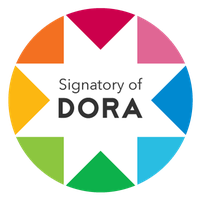Leadership & Organization Development Journal
Issue(s) available: 321 – From Volume: 1 Issue: 1, to Volume: 45 Issue: 8

Volume 45
Volume 44
Volume 43
Volume 42
Volume 41
Volume 40
Volume 39
Volume 38
Volume 37
Volume 36
Volume 35
Volume 34
Volume 33
Volume 32
Volume 31
Volume 30
Volume 29
Volume 28
Volume 27
Volume 26
Volume 25
Volume 24
Volume 23
Volume 22
Volume 21
Volume 20
Volume 19
Volume 18
Volume 17
Volume 16
Volume 15
Volume 14
Volume 13
Volume 12
Volume 11
Hold the chair: the link between short-term exposure and the managerial change in an emerging market during the pandemic
Ömer Tuğsal DorukThis paper aims to study the effect of short-term firm-level exposure on managerial change during the COVID-19 pandemic in the Chinese economy. Such a link is not explored in the…
Exploring the influence of green inclusive leadership on green creativity: examining the underlying mechanisms
Jia-Xin LiuThis study aims to explore the impact of green inclusive leadership (GIL) on green creativity (GCRY) within the context of higher education institutions (HEIs) in China…
Relationship between authentic leadership, service quality, organizational commitment and work engagement: testing a moderated mediation model
Mustafa Changar, Harun SesenThe purpose of this research is to determine how and why authentic leadership affects service quality. For this aim, a conceptual model comprising authentic leadership, service…
Linking the trickle-down effect of supervisor incivility to turnover intentions in the context of SMEs: a serial mediation model
Georgios Theriou, Konstantinos Tasoulis, Foteini KravaritiBased on conservation of resources theory and incivility spiral theory, this study examines the relationship between supervisor incivility and turnover intentions by investigating…
The mediating role of psychological capital in the relationship between LMX and cyberloafing
Megha Gupta, Nikhil Kewal Krishna Mehta, Upasna A. Agarwal, I.M. JawaharThe purpose of this paper is to investigate the direct impact of leader-member exchange (LMX) quality on cyberloafing as well as its indirect impact through psychological capital.
Self-leadership practices and beliefs in nonprofit organizations: differences between leaders and non-leaders
David R. Dunaetz, Mark Gobrail, Jaye Howard, Jasmine Lord, Jaimie C. YunSelf-leadership theory predicts that specific self-leadership practices will enable individuals to better accomplish their goals. However, little is known about the role that…
Impact of green inclusive leadership on employee green creativity: mediating roles of green passion and green absorptive capacity
Majid Murad, Cai LiOrganizations encourage green creativity among their employees to reduce environmental pollution and attain sustainable development. Green, inclusive leadership can produce…
How and when does benevolent leadership promote followers’ proactive customer service behavior?
Mervat ElsaiedThis study aimed to investigate the impact of benevolent leadership on proactive customer service performance by creating a moderated mediation model. The model focuses on the…
Unlocking organisational citizenship and innovation: a servant leadership approach for psychological empowerment
Nurul Liyana Mohd Kamil, Anas Mahmoud Salem Abukhalifa, Anis Eliyana, Andika Setia PratamaThe study sought to investigate how servant leadership affects employees' organisational citizenship and innovative behaviour by emphasising the mediation role of psychological…
Examining the extended full-range leadership model and leadership effectiveness in remote work contexts: the moderating role of VUCA environments
Dominik Hüttemann, Tobias Marc Härtel, Julia MüllerThe COVID-19 pandemic has amplified the importance of effectively leading a remote workforce in volatile, uncertain, complex and ambiguous (VUCA) environments. This study examines…
How leader bottom-line mentality impedes employee innovative behavior: a Pygmalion effect perspective
Tingxi Wang, Boming Yu, Mingwei Liu, Yue ZhouThe primary purpose of this study is to investigate the relationship between leader bottom-line mentality (BLM) and employee innovative behavior, which may be interpreted by…
The more creative, the more silent? The effect of subordinates’ creative deviance on leader silence
Shan Shan Wen, Long Zhang, Kai Zhang, Min OuyangSilence is a commonly seen phenomenon at the workplace. However, little is known about the cause and effect of leader silence. Drawing on the affective events theory, we develop a…
Arrogance from favor: the better supervisor-subordinate guanxi, the more counterproductive work behaviors
Liu Xiayi, Taoyan Yang, Wenhai WanDrawing on the attribution theory, this study re-examined the effect of supervisor-subordinate guanxi (SSG) on counterproductive work behaviors (CWBs) by highlighting the critical…
ISSN:
0143-7739e-ISSN:
1472-5347ISSN-L:
0143-7739Online date, start – end:
1980Copyright Holder:
Emerald Publishing LimitedOpen Access:
hybridEditor:
- Dr Stefanie Johnson
